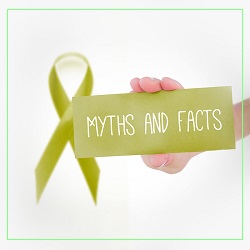
Sarcoma is a rare kind of cancer that can occur in various locations of the body.
Here are some common myths and facts relating to sarcoma that will help you understand the condition better and seek medical attention when required.
Myth 1 :
Consuming superfoods can help prevent sarcoma.
Fact :
No single meal can effectively prevent sarcoma, although a number of foods may be able to moderately increase one's body's resistance to the disease. The best advice is to eat a balanced diet. Because each item has different and frequently unique nutrients, eating a little bit of everything will ensure that you obtain the entire array of vitamins, minerals, and other nutrients that your body needs. less meat, less sugar, salt, and fats; more fruits and vegetables; and less meat. Consuming a "rainbow" of fruits and vegetables, or food in all of its colors, can also ensure that a range of nutrients are available.
Myth 2 :
Because the lump does not hurt, it cannot be a sarcoma.
Fact :
The vast majority of malignant tumors are not painful. When you have pain, it is usually a sign that the sarcoma has advanced. In the case of bone sarcomas, for example, a third of the bone must be destroyed before you experience substantial pain. There is usually little pain in soft tissue sarcoma unless the tumor is pressing on the nerves.
Myth 3 :
I cannot have sarcoma because my blood tests for tumor markers are normal.
Fact :
There are currently no blood tests for tumor markers that can diagnose sarcoma. Current cancer screening tests are limited in scope and can only detect certain malignancies such as liver cancer, ovarian cancer, pancreatic cancer, breast cancer, colorectal cancer, and prostate cancer. There aren't any for sarcomas.
Myth 4 :
Everyone with the same type of cancer is treated in the same way.
Fact :
The kind and stage of the cancer determine the treatment for bone cancer, as with all cancers. Osteosarcoma requires both chemotherapy and surgery, but chondrosarcoma is typically treated exclusively with surgery. Myeloma/lymphoma may not require any surgery at all.
Myth 5 :
Amputation is always necessary
Fact :
Although arm or leg amputation was once a popular sarcoma treatment, it is now uncommon. The tumor can typically be removed without amputation. Nowadays, amputation is only utilized when there is no other way to treat the malignancy or when removing the tissue will cause persistent discomfort or poor limb function. Fortunately, approximately 90% of bone sarcoma cases can be successfully treated with limb-sparing surgery.
Myth 6 :
Cancer is an old people's sickness; children cannot get it.
Fact :
cancer, sadly, may affect anyone, including children. One of the more prevalent malignancies affecting children is bone cancer.
Myth 7 :
There is no chance of survival with stage 4 sarcoma.
Fact :
Even if sarcoma patients are found at advanced stages, odds of survival have increased thanks to developments in surgery, chemotherapy, clinical trials of new medications, gene, and stem cell therapies.
Myth 8 :
Treatment for sarcoma does more harm than good.
fact :
Most of these worries are associated with chemotherapy because of potential side effects including nausea and hair loss. This is not entirely true. For instance, not all patients will have hair loss, and even in those cases, the hair usually effectively regrows.


